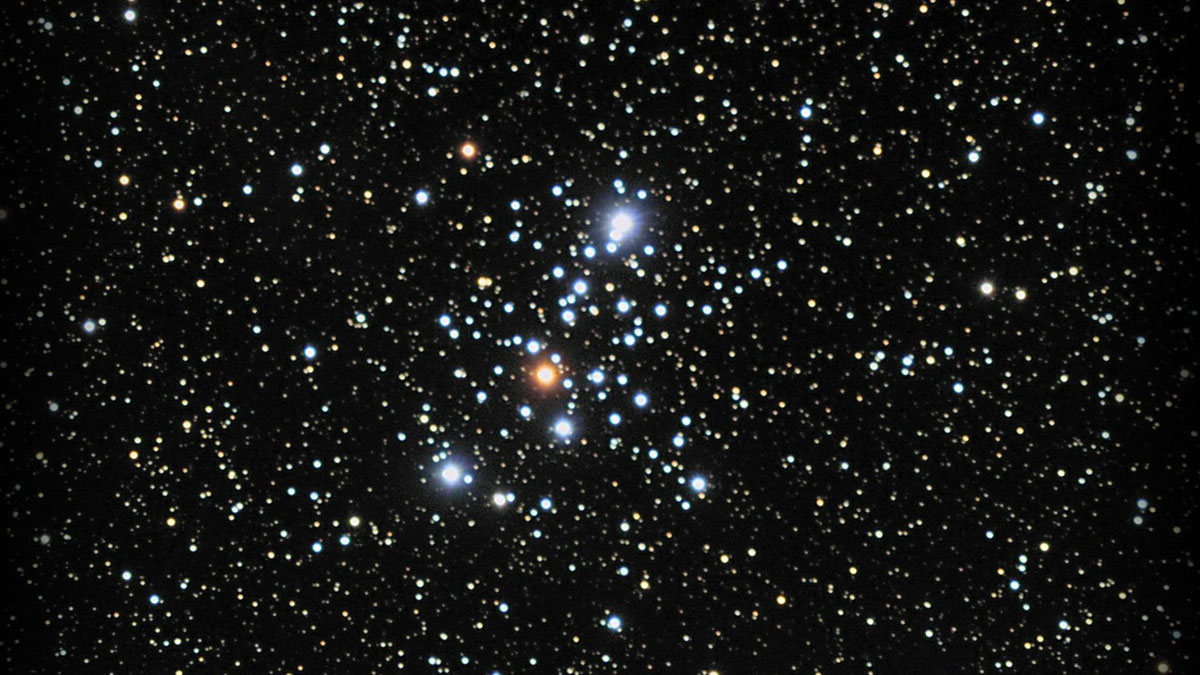Messier 103 (M103) is an open cluster in the constellation of Cassiopeia, and it’s best viewed in autumn through early winter.
Compared to other Messier objects, this one is remote as it lies more than 8,000 light years away from us! Astronomers are unable to pinpoint the exact distance due to interstellar dust surrounding it.
When viewing it, observers will enjoy a handful of bright white stars with a few orange-colored ones mixed in. In total, M103 has more than 100-star members and is a diameter of 15 light years.1
Historically speaking, the French astronomer Pierre Méchain discovered M103 in 1781. Charles Messier cataloged the cluster later that year in the month of March.
My Observations
| Date | October 8, 2021 |
| Time | 10:15 p.m. |
| Location | Seattle, WA |
| Magnification | 145x |
| Scope | Meade 8″ SCT |
| Eyepiece | 14mm |
| Seeing | Average |
| Transparency | Average |

This cluster is bright and somewhat compact with 4-5 prominent stars. Unfortunately, due to light pollution, I’m able to make out the dimmer family of stars that make it a richer-looking object in photographs. I plan to return to this object to review again as light haze has moved into the region.
Key Stats
| Constellation | Cassiopeia |
| Best Viewing | Autumn |
| Visual Magnitude | +7.4 |
| Absolute Magnitude | -4.3 |
| Distance from Earth | 7,200ly |
| Diameter | 10.4 ly |
| Apparent Size | 5 arcmin |
| Milky Way Location | Perseus Arm |
| My Viewing Grade | B |
Historical Observations
Discovered in March or April 1781 by Pierre Méchain and noted as a “cluster of stars between Epsilon & Delta of the leg of Cassiopeia.“
Charles Piazzi Smyth referred to M103 as a “neat double star in a cluster, on Cassiopeia’s knee, about a degree to nf of Delta. A 7 [th mag], straw coloured; B 9, dusky blue. This is a fan-shaped group, diverging from a sharp star in the nf quadrant. The cluster is brilliant from the splash of a score of its largest members, the four principle ones of which are from the 7th to the 9th magnitude; and under the largest, in the sf, is a red star of the 8th magnitude.”1
Sources and Notes
Photo of M103 is licensed under the Creative Commons Attribution-Share Alike 4.0 International license and provided by Jim Mazur.
1Historical observations from messier.seds.org.
Sketch by Wayne McGraw

One thought on “Messier 103 (NGC 581): A Star Cluster Far Far Away”